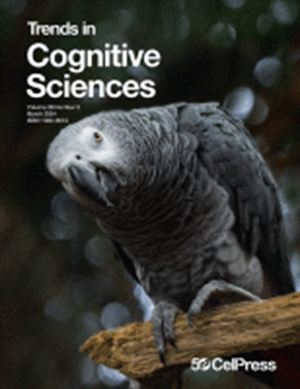群居昆虫交流的认知方面。
IF 17.2
1区 心理学
Q1 BEHAVIORAL SCIENCES
引用次数: 0
摘要
群居昆虫依靠多种沟通渠道。传统上,这些渠道被认为是天生的,会引发刻板的反应。然而,最近的研究表明,认知调节发生在长期被认为完全由遗传编码的交流环境中,从而揭示了以前未被认识到的昆虫群居交流的认知可塑性。本文章由计算机程序翻译,如有差异,请以英文原文为准。
The cognitive side of communication in social insects.
Social insects rely on multiple communication channels. These channels have traditionally been considered innate, eliciting stereotyped responses. However, recent research has shown that cognitive modulation occurs in communication contexts long assumed to be entirely genetically encoded, thus revealing a previously unrecognized cognitive plasticity in social insect communication.
求助全文
通过发布文献求助,成功后即可免费获取论文全文。
去求助
来源期刊

Trends in Cognitive Sciences
医学-行为科学
CiteScore
27.90
自引率
1.50%
发文量
156
审稿时长
6-12 weeks
期刊介绍:
Essential reading for those working directly in the cognitive sciences or in related specialist areas, Trends in Cognitive Sciences provides an instant overview of current thinking for scientists, students and teachers who want to keep up with the latest developments in the cognitive sciences. The journal brings together research in psychology, artificial intelligence, linguistics, philosophy, computer science and neuroscience. Trends in Cognitive Sciences provides a platform for the interaction of these disciplines and the evolution of cognitive science as an independent field of study.
 求助内容:
求助内容: 应助结果提醒方式:
应助结果提醒方式:


